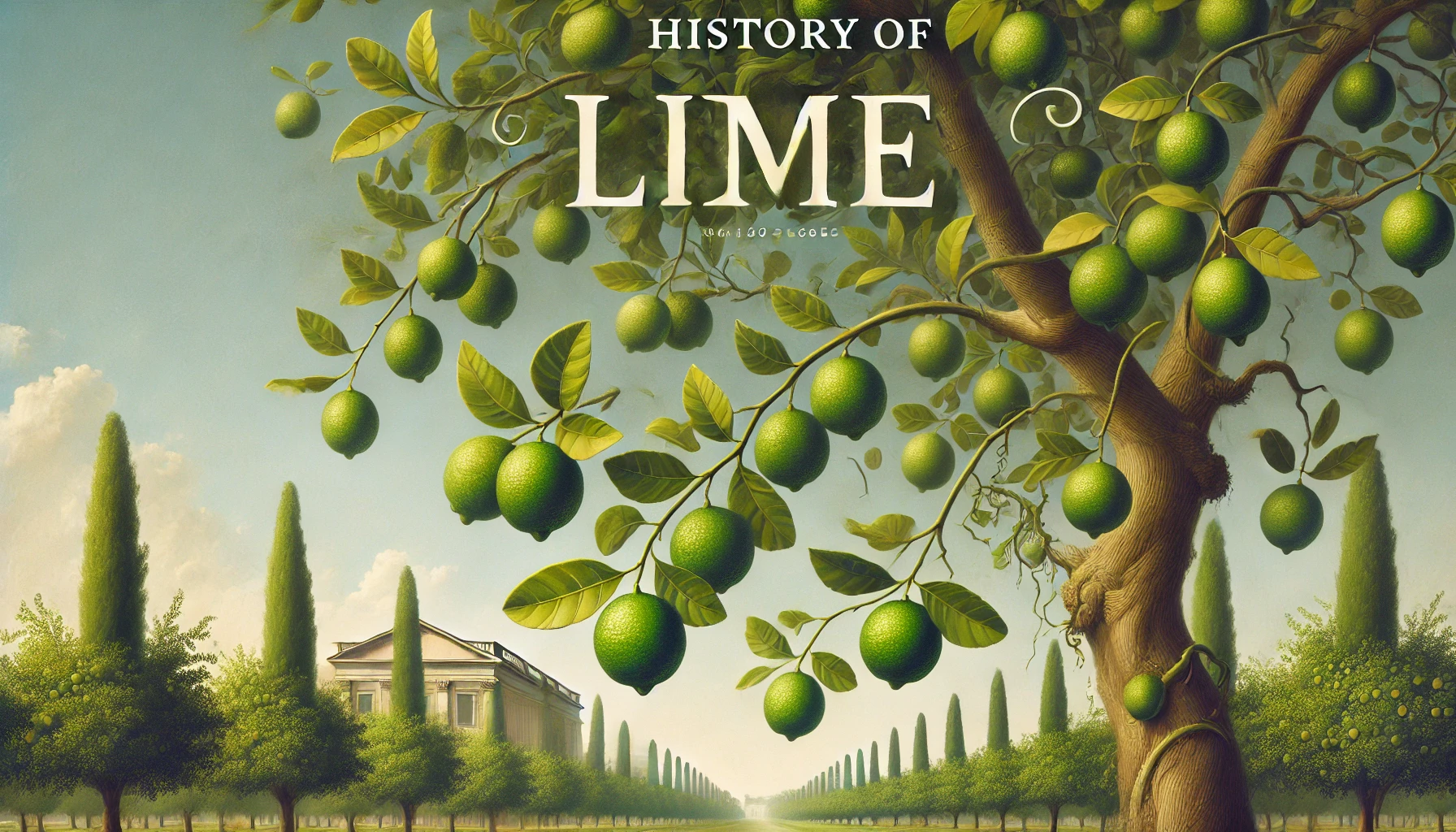Lime, a citrus fruit with a distinctive tart flavor, has played a significant role in culinary, medicinal, and cultural practices throughout human history. Its journey from a wild fruit in the jungles of Southeast Asia to a globally recognized staple is a fascinating tale of exploration, trade, and innovation.
Origins and Early History
Limes are believed to have originated in the regions of Southeast Asia, particularly in Malaysia and Indonesia, where wild varieties still grow. The earliest records of lime cultivation date back to ancient times, with evidence suggesting that various lime species were being cultivated in India and Persia as early as 2,000 BCE.
Early Cultivation in Southeast Asia
In Southeast Asia, indigenous populations likely used limes for their medicinal properties and as a food source. The fruit was valued for its high vitamin C content, which was essential for preventing scurvy, a disease caused by vitamin C deficiency. The lime’s acidic juice also made it a natural preservative and a flavor enhancer for food.
Spread to the Middle East and Mediterranean
The expansion of trade routes facilitated the spread of lime cultivation to the Middle East and the Mediterranean. Arab traders played a crucial role in this process. By the time of the Islamic Golden Age (8th to 14th centuries), lime was a well-established fruit in the Arab world. The Arabs introduced lime to North Africa and Spain, where it was quickly adopted.
In medieval Europe, limes were known but were not as common as other citrus fruits such as lemons and oranges. The cooler climate of Europe was less suitable for lime cultivation, so the fruit remained relatively rare and expensive.
The Age of Exploration and the New World
The Age of Exploration in the 15th and 16th centuries marked a significant turning point in the history of lime. European explorers, particularly the Portuguese and Spanish, carried limes and other citrus fruits to the New World. Lime trees were planted in the Caribbean, Mexico, and Florida, where the warm climate was ideal for their cultivation.
The Caribbean and South America
In the Caribbean, limes thrived and became an integral part of local cuisines and medicinal practices. The Spanish and Portuguese colonizers planted lime orchards in their new territories, ensuring a steady supply of the fruit. Lime juice was used to flavor food, make beverages, and as a natural remedy for various ailments.
The British Navy and Scurvy Prevention
One of the most significant developments in the history of lime occurred in the 18th century with the British Navy’s efforts to combat scurvy among sailors. Scurvy was a major problem during long sea voyages, leading to severe health issues and high mortality rates. In the 1740s, Scottish physician James Lind conducted experiments and discovered that citrus fruits could prevent scurvy.
In 1795, the British Navy adopted the practice of issuing lime juice to sailors as a preventative measure against scurvy. This practice earned British sailors the nickname “limeys.” The lime juice, often mixed with rum in a drink called grog, was an effective way to ensure sailors received their daily dose of vitamin C.
Modern Cultivation and Uses
Today, limes are cultivated in tropical and subtropical regions around the world. Mexico is the largest producer of limes, followed by India, Argentina, and Brazil. There are several varieties of limes, including the Persian lime (Citrus latifolia) and the Key lime (Citrus aurantiifolia), each with its own unique flavor profile and culinary uses.
Culinary Uses
Limes are a staple in many cuisines, adding a bright, tangy flavor to dishes. They are used in everything from savory dishes to desserts and beverages. Lime juice and zest are key ingredients in marinades, sauces, and dressings. Lime is also essential in many traditional dishes, such as Thai Tom Yum soup, Mexican ceviche, and Indian chutneys.
Lime juice is a crucial component in cocktails like the margarita and the mojito. The refreshing taste of lime complements the flavors of alcohol, making it a popular choice for mixed drinks.
Medicinal and Industrial Uses
Beyond its culinary applications, lime has a range of medicinal uses. The high vitamin C content makes it a valuable immune booster and antioxidant. Lime juice is used in traditional medicine to treat colds, sore throats, and other ailments.
Industrially, lime oil, extracted from the peel, is used in the production of perfumes, cleaning products, and aromatherapy. The fruit’s acidic nature also makes it an effective cleaning agent and natural disinfectant.
Conclusion
The history of lime is a testament to its versatility and enduring appeal. From its origins in Southeast Asia to its global presence today, lime has left a lasting impact on culinary traditions, medicinal practices, and cultural expressions. Its journey through history reflects the interconnectedness of human societies and the enduring value of this small but powerful fruit.



